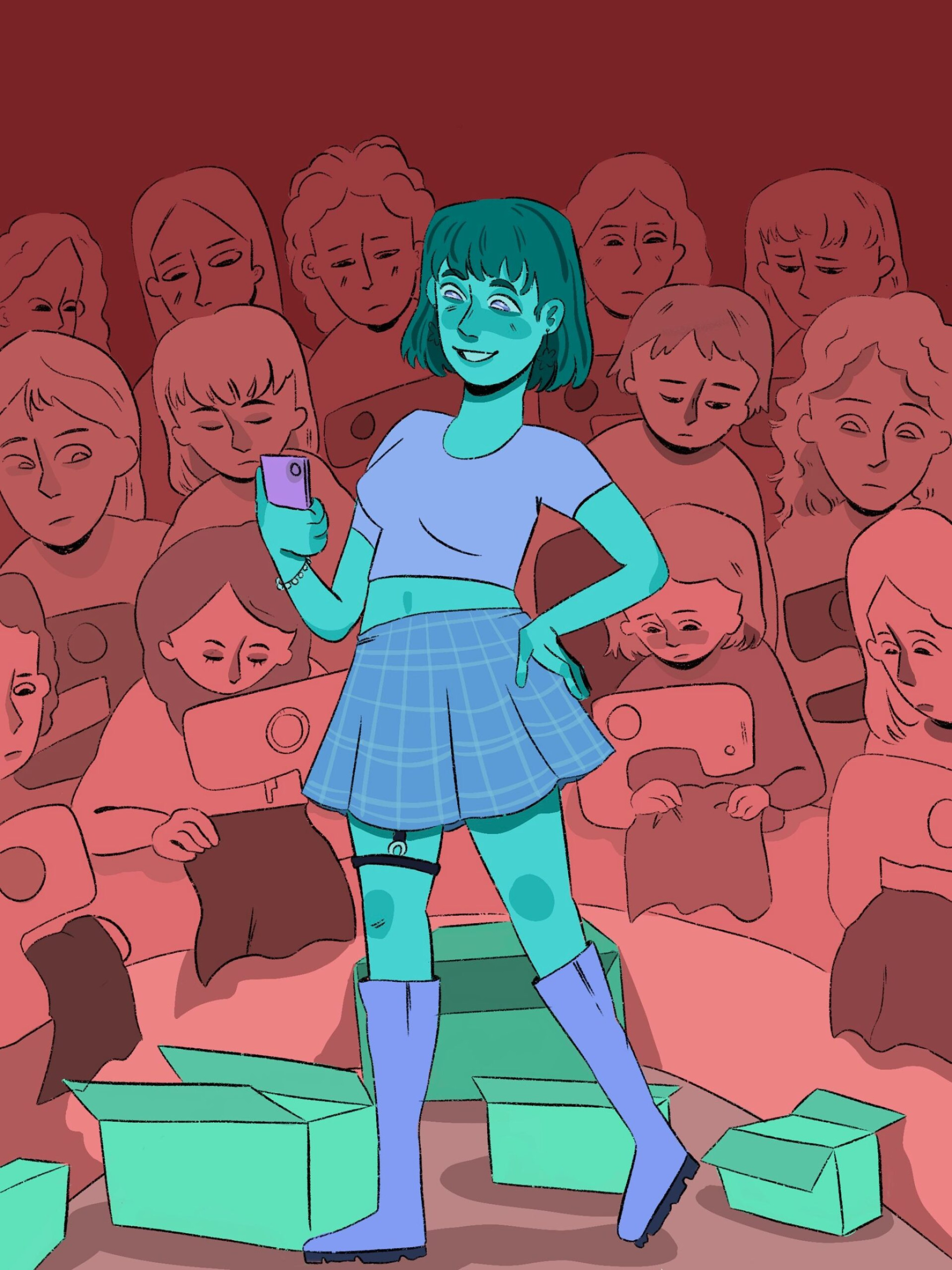Pro
By Mauricio Sierra
Over the past few decades, the clothing industry has made itself an invaluable aspect of today’s economy. In particular, the fast fashion sector has boomed alongside a growing population. Fast fashion offers society a straightforward method of shopping with numerous benefits for both the customer and provider. It remains the most accessible way for families, particularly those who are low-income, to purchase clothes. This method of production is an inexpensive and reliable way of buying all sorts of clothes.
In the US, “88 percent of consumers prefer shopping for fast fashion,” according to the sustainable fashion site Panaprium. Fast fashion holds numerous benefits for various sectors of society. To begin, it employs thousands of people in the process of creating and selling the clothes. Additionally, the “US textile sector is worth $70 billion itself and $23 billion by export factor,” according to SelectUSA.
In part, it’s due to its low costs and accessibility that is helping fast fashion become an easy way of clothes consumption. Fast fashion offers a cheap and speedy way to purchase clothes. Brands such as Zara, Forever 21, American Eagle, and Uniqlo, among others, provide customers with trendy clothes at a good price so they don't have to buy expensive ones. Another benefit is the accessibility of fast fashion, as it is much more affordable for people worldwide.
Zara, for example, has 345 stores across the US, with Inditex, its parent company, employing 144,116 people in the US in 2020. Given these figures, companies could work on expanding their pay and providing incentives such as discounts on clothes for workers. Companies could also expand coverage of worker health benefits and provide them with a healthier work environment.
This isn’t to say that everything is perfect in the fast fashion industry. A major issue that for the most part remains unresolved is the gap in pay. While companies rake in millions of dollars annually, employees at lower levels don’t have the same luck. It is essential to address this barbaric issue that is affecting the livelihood of millions worldwide. We need to publicize the issues surrounding the pay gap in order to make consumers knowledgeable about the companies from which they are purchasing.
However, “fast” fashion can still be valuable if the industry is properly reformed.
Fast fashion is an excellent way for consumers to access affordable clothing. From manufacturers to store managers, it is an enterprise that appears to be on the rise, and it is here to stay.
Con
By Sophie Horvath
Though many teenagers consider themselves to be the most rebellious and expressive people out there, they can still get hooked on the colorful allure of the fast fashion industry. Everything from our music taste, hair color, and most importantly, our clothing, communicates who we want to be. In the teen world, popular social media apps such as TikTok and Instagram generate new fashion trends at a million miles per minute. Although this might seem fun and exciting, fast fashion is taking a silent toll on our environment, and it must come to an end.
Fast fashion is definitely the right word for this rapid rate industry; everything about today’s clothing industry is fast, from trends to ideas to manufacturing. The whole focus of this phenomenon is speed and quantity. One fitting example of this is how a UK fast fashion company reproduced and sold a bodysuit Kylie Jenner wore only ten days earlier.
With activists like Greta Thunberg raising worldwide awareness about the climate crisis, Gen Z is seemingly well informed, and we spend much of our time worrying about the future of our planet. However, while this may be true, teenagers are still one of the most active groups participating in the fast fashion industry, which is responsible for up to 10 percent of the total global carbon emissions. This number is only getting worse: it’s estimated to grow to 50 percent by 2030.
What are the solutions? It’s actually pretty simple. Since teenagers are such an influential group of people in the fashion industry, we need to take matters into our own hands to create a cultural shift. This has already started to happen with the increase in popularity of shopping in thrift stores. Gen Z teens often feel that they find more pieces unique to them in vintage or second-hand stores, and there is something for everyone. The so-called “grandpa” sweater is something only a thrift store can reveal. Half the fun of thrifting is finding a gem after sifting through racks upon racks of old clothes. The process even forces you to become more creative, and try out different styles to make a particular piece work for you. This has the added bonus of being a cheaper alternative to sustainable clothing brands, which are often expensive.
As well as shopping more sustainably, not shopping as much is another simple solution. Trends don’t have to dictate your style, or your money spent. The less money going towards cheap manufacturing, the better. Instead, investing more in fewer, quality items of clothing is a smarter decision. This way, you can expand an item’s lifespan and usage. The fast pace of trends can be hard to follow and appreciate, and a nice pair of thrifted Levi’s won’t go out of style anytime soon.





